In today’s increasingly competitive business landscape, managing intellectual property (IP) risk is critical for organizations seeking to secure their innovations and maintain a competitive edge. Understanding the nuances of intellectual property and implementing effective strategies to mitigate associated risks are essential steps in safeguarding valuable assets.
Understanding Intellectual Property
Intellectual property encompasses creations of the mind, including inventions, literary and artistic works, designs, symbols, names, and images used in commerce. These creations can provide a competitive advantage and contribute significantly to a company’s value.
Definition and Importance of Intellectual Property
Intellectual property refers to intangible assets that are legally protected from unauthorized use. This type of protection encourages innovation by allowing creators to benefit from their inventions and artistic works. The importance of IP cannot be overstated; it forms the backbone of many industries, fostering a culture of creativity and advancement.
Moreover, effective management of intellectual property can lead to increased revenues through licensing agreements and the potential for market expansion. Understanding the value of IP allows organizations to make informed decisions about investment and protection strategies.
In today’s global economy, where ideas and innovations can cross borders with ease, the role of intellectual property becomes even more critical. Companies that prioritize IP protection not only safeguard their inventions but also enhance their reputations and credibility in the marketplace.
Types of Intellectual Property
There are several types of intellectual property, each offering different forms of protection:
- Patents: Protect inventions and grant exclusive rights for a specified period, preventing others from making, using, or selling the invention without permission.
- Trademarks: Protect symbols, names, and slogans used to identify goods or services, thus distinguishing them from competitors in the market.
- Copyrights: Protect original works of authorship, such as literature, music, and art, giving creators exclusive rights to reproduce and distribute their works.
- Trade Secrets: Protect confidential business information that provides a competitive advantage, such as formulas, practices, and designs.
Each type of intellectual property serves a unique purpose and is governed by specific laws and regulations. For instance, patents typically last for twenty years from the filing date, while copyrights can last for the life of the author plus an additional seventy years. Trademarks, on the other hand, can potentially last indefinitely as long as they are in use and properly renewed.
Understanding these nuances is vital for creators and businesses alike, as it allows them to navigate the complexities of IP law effectively. Furthermore, the digital age has introduced new challenges and opportunities for intellectual property, necessitating a reevaluation of traditional strategies to protect and leverage these valuable assets in an ever-evolving landscape.
Identifying Intellectual Property Risks
Recognizing potential intellectual property risks is vital for any organization. A proactive approach to identifying these risks can significantly enhance IP protection strategies and ensure compliance with relevant laws and regulations. By staying ahead of potential threats, businesses can safeguard their innovations and maintain a competitive edge in the marketplace.
Common Intellectual Property Risks
Some common IP risks that organizations may face include:
- Infringement: Unintentional or intentional violations of someone else’s IP rights can lead to legal disputes and financial loss. This risk is particularly pronounced in industries where innovation is rapid, and the lines between original work and derivative work can become blurred.
- Counterfeiting: The unauthorized use or reproduction of a brand’s trademark can damage a brand’s reputation and lead to loss of revenue. Counterfeit products not only undermine the value of genuine goods but can also pose safety risks to consumers.
- Insufficient Protection: Failure to properly register and maintain IP rights can result in losing legal protection and the ability to enforce those rights. Organizations must remain vigilant about renewing trademarks and patents, as lapses can leave them vulnerable to competitors.
- Employee Misuse: Employees may unintentionally disclose or mismanage confidential information, resulting in severe consequences. This risk is heightened in remote work environments where sensitive data may be more easily exposed.
Potential Consequences of Ignoring Risks
Ignoring intellectual property risks can lead to severe ramifications for an organization, including:
- Legal Action: Infringement can result in costly lawsuits and potential damages that may cripple a company’s finances. Legal battles can also divert valuable resources away from core business activities, hindering growth and innovation.
- Competitive Disadvantage: Loss or mismanagement of IP can diminish a company’s market position and allow competitors to gain an upper hand. When competitors exploit an organization’s IP, they can replicate successful products or services, eroding market share and customer loyalty.
- Reputational Damage: Negative publicity from legal disputes can harm a brand’s reputation, affecting customer trust and loyalty. In today’s digital age, news of IP infringements can spread rapidly, leading to long-lasting damage to a company’s public image and customer relationships.
Moreover, the implications of IP risks extend beyond immediate financial concerns. Organizations may find themselves facing increased scrutiny from regulators and industry watchdogs, which can lead to more stringent compliance requirements. This can create a cycle of increased operational costs and resource allocation to manage these risks effectively.
Additionally, a lack of robust IP strategies can stifle innovation within the organization, as employees may feel less secure in sharing their ideas and inventions, fearing potential theft or misappropriation. Therefore, a comprehensive understanding of intellectual property risks is essential not only for protecting assets but also for fostering a culture of creativity and innovation within the organization.

Strategies for Managing Intellectual Property Risks
Effective management of intellectual property risks requires a comprehensive approach that encompasses policy development, education, and ongoing monitoring.
Developing an Intellectual Property Policy
Establishing a robust IP policy is crucial for defining how an organization manages its intellectual property. This policy should include:
- Guidelines for identifying and protecting IP.
- Procedures for reporting suspected IP infringement.
- Protocols for conducting IP audits and assessments.
A well-drafted IP policy not only protects the organization’s interests but also ensures compliance with applicable laws and regulations, minimizing risk exposure. Furthermore, the policy should be regularly reviewed and updated to reflect changes in technology, market conditions, and legal frameworks. This proactive approach allows organizations to adapt to new challenges and opportunities, ensuring that their IP remains safeguarded against evolving threats.
Training and Education on Intellectual Property
Training employees on the importance of intellectual property and best practices for protection is critical. Regular workshops and seminars can help raise awareness about:
- The different types of intellectual property and their significance.
- How to identify and report potential IP risks.
- Legal obligations regarding intellectual property.
Investing in education increases vigilance among employees and reduces the likelihood of unintentional IP breaches. Additionally, incorporating real-world case studies into training sessions can provide employees with practical insights into how IP violations can occur and the consequences that follow. By fostering a culture of IP awareness, organizations empower their workforce to act as stewards of their intellectual assets, encouraging proactive behavior that can prevent costly infringements before they happen.
Moreover, creating a centralized resource hub where employees can access IP-related materials, such as guidelines, FAQs, and contact information for IP specialists, can further enhance understanding and compliance. This hub can serve as a go-to reference for employees seeking clarity on IP matters, ensuring that they feel supported and informed in their efforts to protect the organization’s intellectual property.
Legal Aspects of Intellectual Property Risk Management
Legal considerations play a pivotal role in managing intellectual property risks. Familiarity with laws and regulations can aid organizations in navigating the complex landscape of IP protection effectively. In an increasingly digital world, where ideas and innovations can be easily shared and replicated, understanding these legal frameworks becomes even more critical. Organizations that prioritize IP risk management not only safeguard their assets but also enhance their competitive edge in the marketplace.
Intellectual Property Laws and Regulations
Organizations must stay updated on pertinent intellectual property laws that govern protection, enforcement, and compliance. Some crucial regulations include:
- Trademark Law: Governs the registration and protection of marks that distinguish goods and services.
- Copyright Law: Protects original works and outlines rights and limitations concerning their use.
- Patent Law: Established guidelines regarding patent eligibility, rights, and the patent application process.
Understanding these legal frameworks helps in identifying potential risks and taking preemptive measures to mitigate them. Moreover, the global nature of business today means that organizations must also be aware of international IP laws and treaties, such as the Agreement on Trade-Related Aspects of Intellectual Property Rights (TRIPS), which sets minimum standards for IP protection among member countries. This awareness can help businesses avoid costly legal pitfalls when operating in foreign markets.
Role of Legal Counsel in Risk Management
Legal counsel is invaluable in intellectual property risk management. An experienced IP attorney can assist in various ways:
- Conducting thorough IP audits to assess the strengths and weaknesses of current protections.
- Advising on compliance with applicable laws and regulations to avoid infringement claims.
- Representing organizations in legal disputes and negotiations.
Having legal expertise on board enhances an organization’s capability to navigate complex IP concerns effectively. Additionally, legal counsel can provide strategic advice on the commercialization of IP assets, helping organizations to leverage their intellectual property for maximum financial benefit. By developing licensing agreements or partnerships, businesses can create new revenue streams while ensuring that their IP rights are protected. Furthermore, proactive legal strategies can also involve educating employees about IP rights and responsibilities and fostering a culture of respect for intellectual property within the organization.
Technology and Intellectual Property Risk Management
The role of technology in managing intellectual property risks is gaining prominence in an increasingly digital world. Leveraging advanced tools can enhance protection and streamline oversight.
Use of Technology in Protecting Intellectual Property
Various technologies can aid in safeguarding intellectual property, including:
- Encryption: Secures digital files containing sensitive IP information from unauthorized access.
- Monitoring Software: Tracks online use of trademarks and copyrights to identify potential infringements.
- Blockchain: Utilizes distributed ledger technology to establish proof of ownership and protect IP rights.
Integrating technology solutions into IP strategies allows organizations to proactively defend their assets in a dynamic environment.
Digital Risks to Intellectual Property
With the rise of digital platforms, new risks to intellectual property have emerged. Organizations must be vigilant about:
- Cybersecurity threats that could lead to data breaches and unauthorized disclosures.
- Online piracy can undermine revenue streams from copyrighted materials.
- Fake online marketplaces that exploit trademarks and mislead consumers.
Addressing these digital threats involves adopting comprehensive risk management strategies that incorporate technology, legal safeguards, and ongoing training.
Conclusion
In conclusion, managing intellectual property risk is a multifaceted endeavor requiring a thorough understanding of IP, diligent risk identification, and the implementation of strategic approaches. By developing robust policies, investing in training, and utilizing technology effectively, organizations can enhance their capacity to protect intellectual property and sustain competitive advantage in an ever-evolving marketplace.
Computer Packages Inc. (CPI) is a privately owned IP management company with over fifty years of experience serving the IP community. Our mission is to be the most trusted partner in safeguarding clients’ IP assets with innovative IP management software and annuity services. Learn how we specialize in IP patent, trademark, and annuity management by exploring our services.


